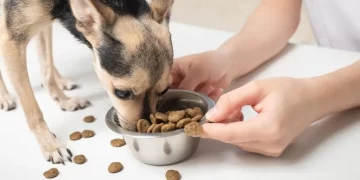For many pet owners, the idea that their beloved companion might be in pain without showing clear symptoms is deeply unsettling. We’re used to associating pain with dramatic signals—limping, whining, bleeding, or refusing food. But most pets, especially cats, and many dogs, often suffer silently. Their evolutionary instinct is to mask weakness, a survival trait that doesn’t serve them well in the safety of modern homes. That’s why recognizing the behavioral signs of discomfort, even when physical symptoms aren’t immediately visible, is critical. Pet pain doesn’t always scream—it whispers. And as a responsible guardian, learning to hear those whispers could be the most important thing you do for your animal’s quality of life.
Understanding How Animals Hide Pain
Pain in pets is complex. It can be acute or chronic, physical or emotional, and influenced by age, species, personality, and past experiences. Wild instincts still guide how pets respond to injury or discomfort. Showing vulnerability in the wild can mean the difference between life and death, so many animals have evolved to hide weakness.
Cats are especially notorious for stoicism. Dogs, while often more expressive, may also suppress pain to avoid upsetting the social hierarchy in their pack—or in their household. Small mammals and birds, too, often exhibit pain only in the advanced stages of distress.
This natural concealment means that waiting for dramatic symptoms can delay treatment. The good news is that animals do send out signals—we just have to know how to read them.
Behavioral Signs That Suggest Your Pet Is in Pain
The first clue that something is wrong is often a change in behavior. These shifts might seem minor at first, but they reflect internal distress. Watch for patterns like:
- Withdrawal or hiding: A previously sociable pet who starts avoiding interaction, spending more time alone, or hiding in tight spaces may be in pain. This is especially common in cats and rabbits.
- Increased aggression or irritability: Some animals react to pain with defensive behavior. A dog who growls when touched on a certain spot, or a cat who hisses when picked up, may be guarding a sore area.
- Reduced activity: A dog who no longer runs for their leash or a cat who stops climbing furniture is telling you something has changed. Lethargy without an obvious cause should never be ignored.
- Changes in appetite: Pain, especially dental or abdominal, can lead to reduced food or water intake. Pets may approach the bowl, sniff, then walk away.
- Restlessness: In some pets, pain causes pacing, shifting positions frequently, or inability to settle down. They may lie down and immediately get back up again, trying to find a position that doesn’t hurt.
- Excessive grooming or licking: Dogs and cats may repeatedly lick or chew at a painful area, even breaking the skin. If no wound is visible, they may be responding to deep-seated joint or muscle pain.
- Unusual posture: A cat who curls tightly with their feet under them or a dog who arches their back while walking may be guarding painful joints or organs. Limping, head tilts, or tail tucking are also signs.
- Avoiding stairs, couches, or certain surfaces: Pets that suddenly stop jumping onto their usual spots or hesitate at stairs may be trying to avoid movements that worsen discomfort.
Behavioral Differences by Species
While the general signs apply across the board, each species—and even each breed—has its own way of expressing pain. For example:
- Cats tend to go quiet and retreat. Changes in vocalization, litter box habits, or grooming routines are often the best indicators.
- Dogs might vocalize more—whining, barking, or yelping—or become unusually clingy or standoffish, depending on the individual.
- Rabbits and small mammals often stop eating, become very still, and sit hunched. They are particularly vulnerable to pain-induced stress and need immediate care.
- Birds show pain through fluffed feathers, squinting, reduced chirping, or decreased activity. Many will perch low or sit at the cage bottom.
Understanding what is “normal” for your pet is essential. You’re not just observing behavior—you’re comparing it to their personal baseline. What’s typical for one cat may be cause for concern in another.
Typical vs. Concerning Changes: What’s Normal Aging and What’s Not
As pets age, their energy levels naturally decline. But age-related slowing down isn’t the same as chronic pain. Knowing the difference is key:
- Normal aging might include shorter play sessions, more frequent naps, or reluctance to try new things.
- Pain-related decline is more sudden, marked by avoidance of movement, loss of interest in favorite activities, and signs of discomfort during routine interactions.
If your older dog stops chasing a ball but still enjoys short walks and responds eagerly to attention, it’s likely age. If they suddenly stop going on walks altogether or resist being touched, it’s time to investigate further.
Similarly, if a senior cat stops using the litter box or sleeping in high places, don’t dismiss it as “just old age.” These could be the first signs of arthritis or other painful conditions.

Using Observation to Catch Pain Early
Being an attentive observer is your best tool. Start by mentally tracking your pet’s routines: where they sleep, how they walk, how they react to touch, their appetite, how they play, and how they interact with you and their environment. Once you know their rhythm, changes become more obvious.
Many pet owners find it helpful to keep a simple pain journal. This doesn’t need to be formal—just quick notes about any observed differences in behavior, mobility, or eating. These logs can also help your vet assess the situation with more accuracy.
In 2025, several pet health apps also allow owners to track behavior patterns, reminders for pain assessments, and even video recordings of changes in movement—technology that makes early intervention even easier.
When in Doubt, Use the Touch Test
Your hands can tell you a lot. Gently run them over your pet’s body to check for areas of heat, swelling, muscle loss, or sensitivity. Press lightly on joints, lift limbs, or move tails to see if there’s resistance or reaction. This should always be done gently and with calm voice cues.
If your pet flinches, pulls away, growls, or shows sudden tenseness, that’s a clear sign of discomfort. Use treats to make this experience positive, and note which areas cause reaction.
Never force touch if your pet resists—it may do more harm. If your pet consistently avoids being handled, that’s reason enough to seek veterinary attention.
Pain Doesn’t Always Mean Medication
The benefit of early detection is that you don’t have to rely solely on drugs. Mild or moderate pain can often be managed with:
- Lifestyle modifications like ramps, orthopedic beds, litter box changes, or non-slip flooring
- Weight loss, which greatly reduces joint pressure in overweight pets
- Joint supplements such as glucosamine, omega-3s, or green-lipped mussel powder
- Physical therapy and massage, now widely available through certified pet practitioners
- Laser therapy, acupuncture, or hydrotherapy, which are increasingly popular non-invasive options
Your vet can guide you toward pain relief strategies that are both effective and tailored to your pet’s condition and personality.
When to See a Vet Immediately
Some signs should prompt a veterinary visit right away. These include:
- Sudden or severe lameness
- Crying out in pain
- Loss of appetite for more than 24 hours
- Inability to urinate or defecate normally
- Heavy panting, drooling, or lethargy with no obvious cause
- Reluctance to move, walk, or rise
- Blood in urine or feces
These could indicate serious issues like internal injuries, organ distress, or acute infections—and waiting can result in rapid deterioration.
Building a Pain-Aware Household
Recognizing pain is only part of the equation. The next step is creating an environment that supports healing and comfort. Every member of the household should know how to interact gently with a pet in discomfort—especially children. Teach your family not to tug on limbs, startle a resting pet, or force them into rough play.
Make home life easier with raised feeding bowls, accessible sleeping spots, and quiet corners. Create a routine that includes calm, positive interaction. Praise gently. Use slow movements. Watch how your pet responds—and adjust accordingly.
Final Thoughts: Compassion Begins with Awareness
Pain doesn’t always look like pain. In pets, it often looks like subtle changes in habits, personality, or posture. By learning your animal’s normal behavior and tuning into the quiet cues, you become their best advocate. You don’t need a veterinary degree to notice when your pet stops jumping, starts hiding, or loses their spark. You just need attentiveness and compassion. The sooner pain is recognized, the sooner it can be relieved—through treatment, lifestyle adjustments, or simply your presence. In the silent language of animal care, noticing is love. Listening is healing. And acting early makes all the difference.





















































